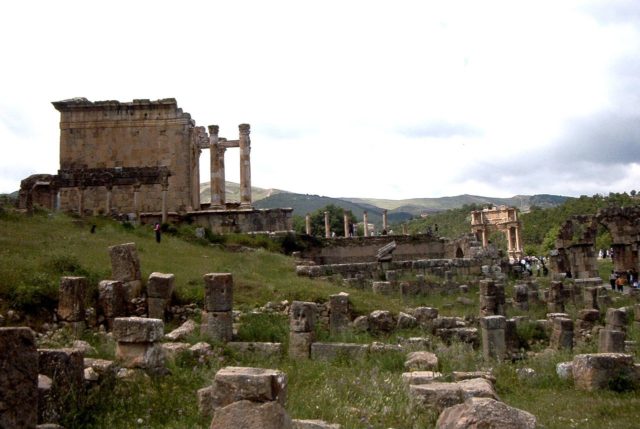Djémila, formerly Cuicul, is a small village in Algeria which contains the greatest Roman ruins of North Africa. Located 50 km north-east of the town of Sétif and it was built during the first century AD as a military garrison situated on a narrow triangular plateau.
It is estimated that until the 3rd century 20, 000 people lived in the village.


Out of the many buildings in the ancient Cuicul, the most significant are the temples, basilicas, arches, baptistery, two forums and the theater that was put outside of the city walls because it had a capacity of 3, 000 people and was immense to be placed in the limited space of the village. It had two main streets, Cardo Maximus and the Decumanus Maximus, which composed the principal axes.
Cuicul was populated by a colony of Roman soldiers who came from Italy, and after a while, it became a trading market. One of the best-known markets was that of the Cosinus brothers, which is an evidence of the economic growth and prosperity of the ancient city.



A lot of vestiges are visible at the site, including the vestiges of the Temple of Venus Genitrix and vestiges of monuments that comprise public buildings and dwellings decorated with mosaics. The museum of the city is the only one in Algeria with its walls entirely covered with mosaics. The basilica and the baptistery were made in the 4th century when Christianity became popular in the area.
They are located to the south of Cuicul and today are popular attractions known as the Christian Quarter. The location of the whole city is fascinating because of its buildings and the way that they have been integrated into the mountain landscape. However, Djémila is under a lot of treats today from fire, earthquakes, robbing, vandalism, and illegal constructions.


Around the 5th century and 6th century, after the fall of the Roman Empire, Cuicul was slowly abandoned. Later, Muslims dominated the region and renamed the ancient city Cuicul into Djémila which means beautiful in Arabic.
Because of its unique style of Roman architecture to a mountain environment, in 1982, Djémila became a UNESCO World Heritage Site. Today, Djémila stands out as one of the best-preserved Roman ruins of North Africa.
